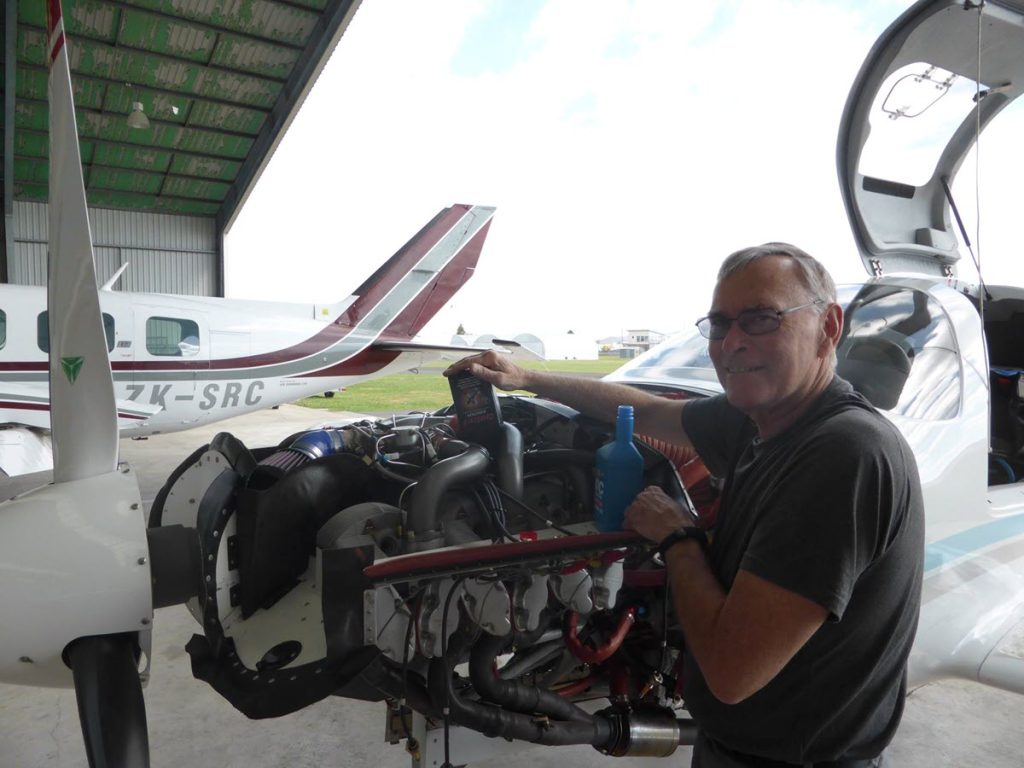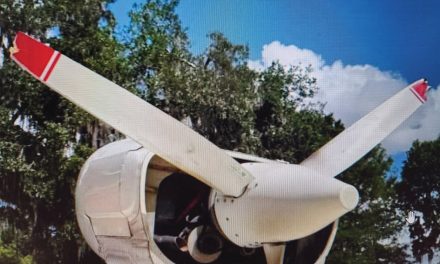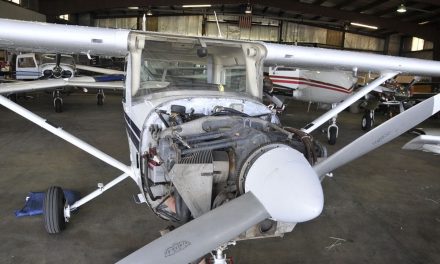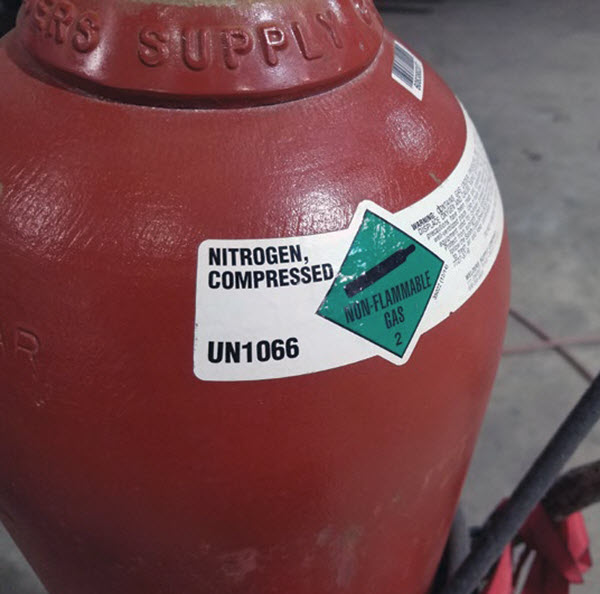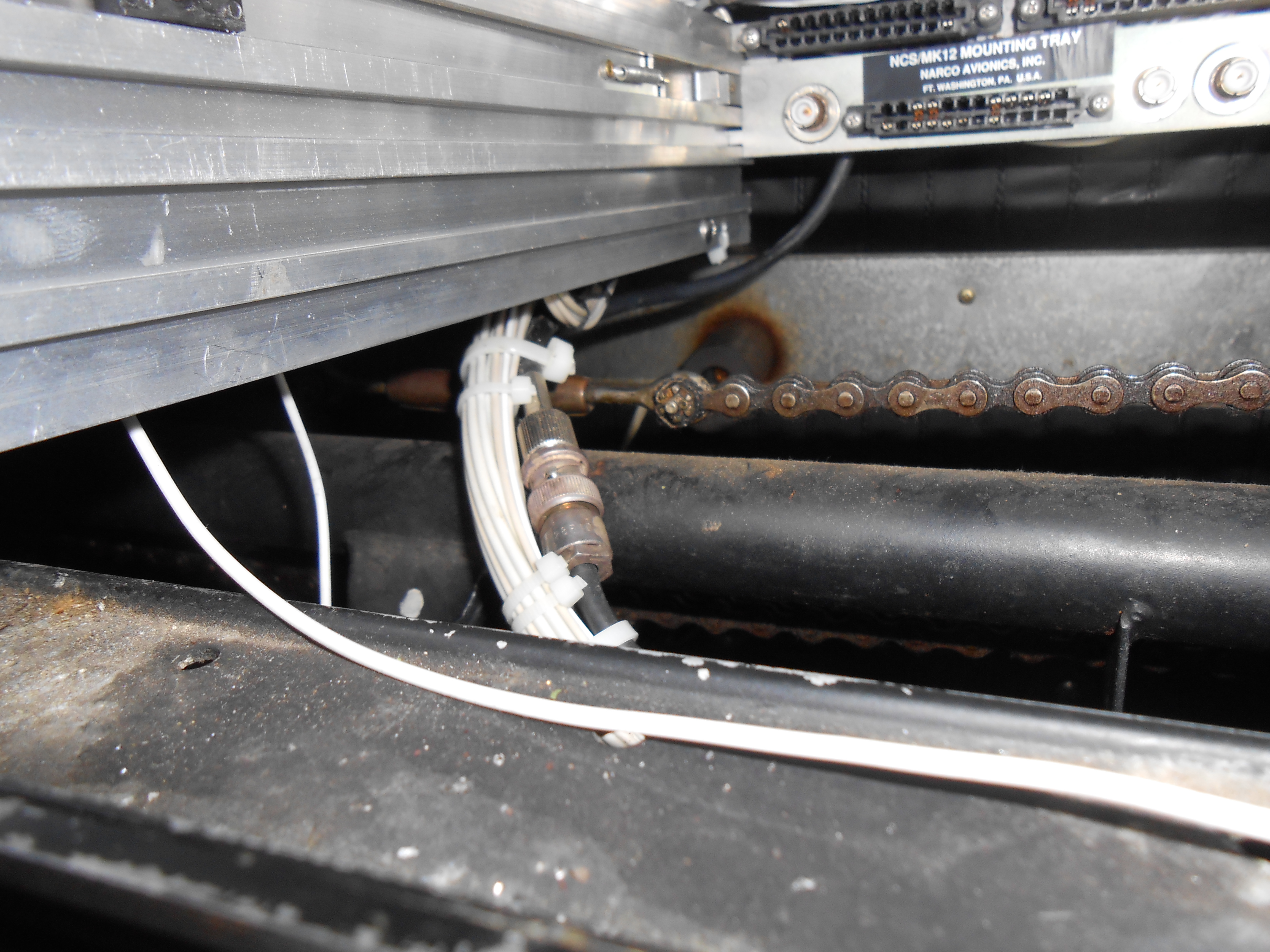
If you haven’t heard of CamGuard, then you don’t read enough magazines or go to enough airshows. CamGuard has been around for about 20 years now and has become one of the most popular oil additives since the Wright brothers first lifted off. There have been other additives, mostly elixirs of dubious background, that have disappointed a lot of pilots, but CamGuard has, at this point, achieved nothing but acceptance throughout aviation.
CamGuard is added to the crankcase whenever oil is changed or added. It was developed by Ed Kollin, a brilliant formulation chemist with decades of experience in the world of high-performance lubricants. Kollin met Greg Merrell, of Aircraft Specialties Services, Inc. (ASSI), in Tulsa, OK, and they partnered up on the development of an additive that would protect aircraft engines from the four would-be destructive forces affecting these air-cooled power plants: Corrosion, Wear, Sludge and Leaky Seals. These four items affect all engine components in every location of the engine, from the crankshaft and bearings to the cylinders and valves. They also combine to reduce TBO and increase unscheduled maintenance, wasting owners’ money.
That I’m a CamGuard fan should be obvious by now. I’ve used it in my airplanes and my automobiles and seen nothing but positive results. In writing about CamGuard, I’ve been exposed to users from all areas of aviation, from hobby pilots to airshow performers, air race guys to overhaul shops. I have, in six years of knowing about CamGuard, heard just two negative reports: One was a pilot who didn’t like the smell. And the second was a shop owner who thought that it could make Continental starter adapters slip. (We’ll talk about this later).
CamGuard was developed by Kollin to be the ultimate additive package that, frankly, should be used in every aircraft oil. Of the oils out there, some have minimal additives that attempt to address one or two of the four problems mentioned, but none of them has the full battery of protection of CamGuard—and it’s not even close. One major oil company goes so far as to say, “CamGuard is already in our oil, so you don’t need to add it!” That bold claim is simply not true. Any oil possessing all these properties would be more expensive.
CamGuard itself is expensive, but eliminating just one round of unscheduled maintenance (like replacing a cylinder) over the life of an engine more than covers the cost— not to mention the peace of mind it provides.
Blow-By Is The Problem
Blow-by is responsible for the vast majority of the problems we see in our aircraft engines. Blow-by is the gas that bypasses the less-than-perfect piston ring seal as the peak combustion pressures approach 1000 psi. Blow-by consists of raw avgas, partially burned (and reactive) avgas, water, carbon dioxide, heat, and tiny lead particles (as lead bromide). The blow-by fuel reacts to create deposit-forming resins and organic acids. The resins lead to deposits and sludge, and the acids combine with water to create a version of battery acid.
A lot of water is produced by the engine as it runs. Approximately one gallon of water, as vapor, is produced for every gallon of fuel that is burned during the combustion process. Most of this water simply exits the engine through the exhaust pipe. However, some of it joins the blow-by fuel in shooting past the piston rings and entering the oil.
Rust Prevention
CamGuard provides anti-corrosion protection with molecules that form an impermeable film on the surface of metals. This temporary film is reformed each time the hot engine is shutdown. This inhibiting film repels water and acidic molecules, thus stopping corrosion before it starts. Check out the short video describing corrosion inhibitors on the CamGuard website: www.aslcamguard.com/videos/technical-videos.
Deposit Control
If you ever take off a cylinder and look at the piston, you’ll see black carbon crud that has formed on the surface of the piston and in the ring grooves. Further down the piston, where temperatures are cooler, you’ll also notice grey sludge in the oil control ring groove. The formation of this sticky (varnish) resin is the product of blow-by fuel contamination and heat.
This fuel-derrived resin reacts to form all the varnish and carbon deposits you see on the hot parts in the engine. Reactive fuel resin sticking to hot surfaces and cross linking (polymerizing) to form carbon deposits is potentially a big problem. Deposits cause piston rings and valves to stick, leading to costly repairs or worse.
In cooler areas, we notice the addition of the lead bromide (lead) particles to make up sludge. Sludge is that gooey, grey material you find in hollows and eddy spaces in an engine where oil flow is slow. Sludge consists of a small amount of varnish resin loosely holding a lot of lead particles. Sludge cannot be filtered off and, because it is heavy, collects in these out-of-the way places.
CamGuard stops the crosslinking of the varnish resin. This effectively shuts down both deposit and sludge formation. It would be like varnish painted on a surface never drying.
Wear Protection
The anti-wear chemistry in CamGuard forms sacrificial anti-wear films just like ZDDP (zinc) does in automotive oils. As oil washes over the metal surfaces of the lifters and cam, the pressure of the cam lobe on the lifter face (upwards of 110,000 psi) creates frictional heat. This heat causes the anti-wear molecules to decompose and create a thin plastic-like film on each of the rubbing surfaces. This thin film stops the frictional heating. The film begins wearing away (sacrificially) until the metal-to-metal frictional heating returns and the whole process starts again. Check out the short video describing wear protection on the CamGuard website: www.aslcamguard.com/videos/technical-videos
Have a website login already? Log in and start reading now.
Never created a website login before? Find your Customer Number (it’s on your mailing label) and register here.
JOIN HERE
Still have questions? Contact us here.


